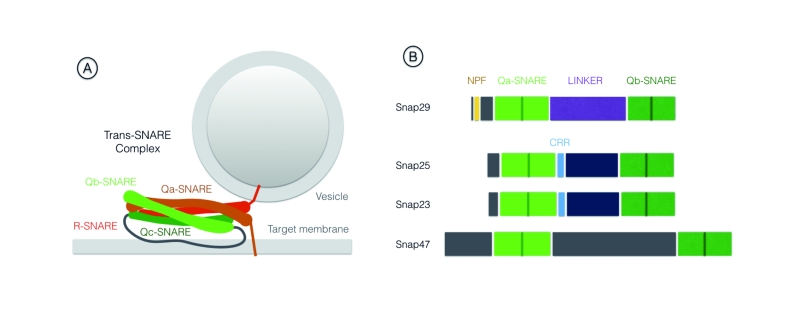Back to article: How to use a multipurpose SNARE: The emerging role of Snap29 in cellular health
FIGURE 1: Illustration of the trans-SNARE complex involved in membrane fusion. All SNARE domains are oriented with the N-termini to the left (A). Schematic representation of SNAP family members in mammals (B). The homologous SNARE domains among the 4 paralogs are shown. The position of the central glutamine residue (Q) is indicated by a line. The linker region of Snap29 is (purple) differs from that of other family members and does not contain a cysteine rich region (CRR; light blue) for membrane targeting.The N-Terminal acidic NPF motif, exclusive to Snap29 among family members, is shown in yellow.

